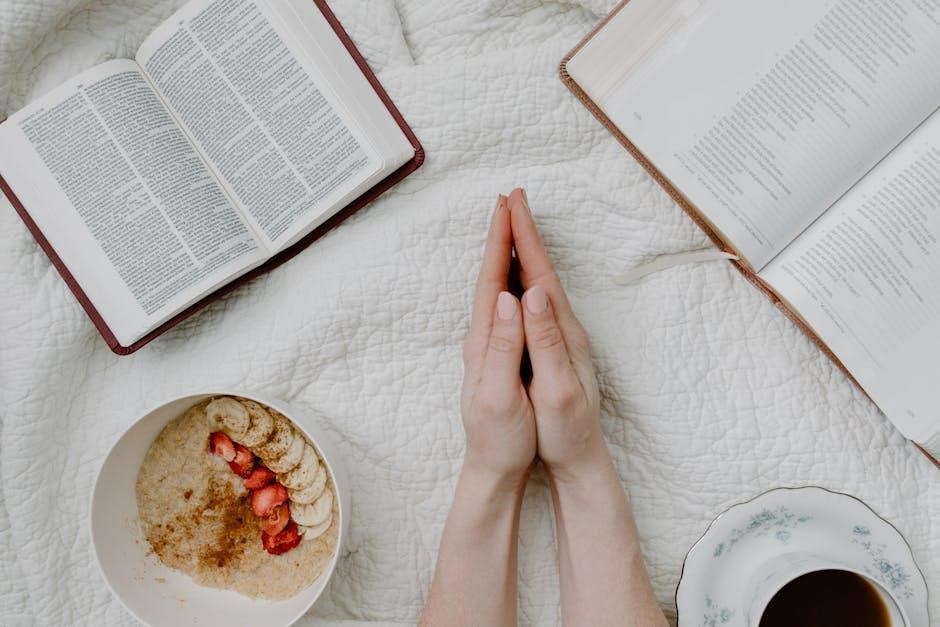Cross Stitch Instructions: A Beginner’s Guide
Embark on a creative journey with our beginner’s guide to cross stitch! This timeless craft is making a comeback, offering a relaxing and rewarding hobby. Follow our step-by-step instructions to master the basic techniques, from threading the needle to securing your stitches, and start creating beautiful designs.
What is Cross Stitch?
Cross stitch is a form of counted thread embroidery, a craft with a rich history enjoyed by makers and crafters for generations. At its core, cross stitch involves creating X-shaped stitches on fabric with a uniform weave, traditionally Aida cloth or linen. The even weave of the fabric provides a grid, making it easy to create consistent and precise designs.
The beauty of cross stitch lies in its simplicity. By following a pattern or chart, you can transform simple stitches into intricate images, patterns, and text. Each square on the chart corresponds to a single cross stitch, allowing you to build up a design one stitch at a time.
Cross stitch is incredibly versatile, suitable for creating everything from small ornaments and greeting cards to large wall hangings and even clothing embellishments. The possibilities are endless, limited only by your imagination. It’s a craft that can be easily customized to reflect your personal style and interests, making it a truly rewarding and enjoyable pastime. Whether you’re a seasoned crafter or a complete beginner, cross stitch offers a world of creative possibilities to explore.
Essential Materials for Cross Stitching
To embark on your cross-stitching adventure, gathering the right materials is paramount. First, you’ll need Aida fabric or linen, the foundation upon which your design will come to life. Aida is favored by beginners for its distinct squares, making stitch placement a breeze. Next, select embroidery floss, the vibrant thread that will form your cross stitches. Choose colors according to your pattern or personal preference.
A tapestry needle, with its blunt tip and large eye, is essential for guiding the floss through the fabric without snagging. A cross stitch pattern or chart will serve as your roadmap, guiding you stitch by stitch.
A hoop or frame is crucial for maintaining fabric tension, preventing distortion and ensuring even stitches. Scissors are needed for trimming floss ends. Finally, good lighting is essential for seeing the fabric clearly and avoiding eye strain. With these essential materials in hand, you’ll be well-equipped to begin your cross stitch project and unlock a world of creative possibilities. Don’t forget a comfortable chair!

Aida Fabric: Understanding Count and Size
Aida fabric is the most common choice for cross stitch, especially for beginners, thanks to its evenly spaced holes that create distinct squares. Understanding the “count” of Aida fabric is crucial for determining the size of your finished project and the level of detail you can achieve. The count refers to the number of squares per inch; for example, 14-count Aida has 14 squares per inch.
A higher count means smaller squares, resulting in a more detailed and intricate design, while a lower count means larger squares, making it easier to see and stitch, but with a less detailed final product. Choosing the right count depends on your pattern and desired size.
The size of your fabric also matters. It’s important to choose a piece large enough to accommodate your entire design, with extra fabric around the edges for framing or finishing. Always add a few inches of extra fabric on all sides to avoid running out of space and making the stitching process more manageable. Consider the finished size you want and select the Aida count and fabric size accordingly.
Threading the Needle: A Simple Technique

Threading the needle is a fundamental step in cross stitching, and mastering a simple technique will save you frustration and time. Start by cutting a manageable length of floss, typically around 18 inches. This prevents tangling and knotting as you stitch. Separate the strands of floss according to your pattern’s instructions; most patterns use two or three strands.
Moisten the end of the floss slightly to help bind the fibers together. This makes it easier to pass through the eye of the needle. Hold the needle firmly in one hand and carefully guide the moistened floss end through the eye. If you’re having trouble, try using a needle threader, a small tool that simplifies the process.
Once the floss is through the eye, pull it through, leaving a tail of about an inch or two. This tail will be secured when you start stitching, so it doesn’t need to be knotted. A well-threaded needle is essential for smooth and efficient cross stitching, so take your time and practice this simple technique.
Starting a Cross Stitch Project
Embarking on a cross stitch project involves several key steps to ensure a successful and enjoyable experience. First, carefully select your pattern and gather all the necessary materials, including Aida fabric, embroidery floss, a needle, and a hoop or frame. Preparing your fabric is crucial; iron it to remove any wrinkles and consider serging or taping the edges to prevent fraying.
Finding the center of your fabric is essential for centering your design. Fold the fabric in half lengthwise and then in half widthwise, pressing lightly to mark the center point. Use a water-soluble marker to indicate this spot. Next, transfer the pattern to your fabric using a variety of methods, depending on the pattern complexity.
Thread your needle with the appropriate number of floss strands as specified in your pattern. Secure the end of the floss by either using a waste knot or the loop start method. Finally, position your fabric in the hoop or frame, ensuring it is taut but not overly stretched. You’re now ready to begin stitching!
The Basic Cross Stitch: Step-by-Step
Mastering the basic cross stitch is fundamental to any cross stitch project. Start by bringing your needle up through the fabric at the lower-left corner of your designated square. Then, insert the needle down through the upper-right corner of the same square, completing the first half of the stitch.
Next, bring the needle up through the lower-right corner of the square. Insert the needle down through the upper-left corner, creating the second half of the stitch and forming a complete “X.” Ensure that the top stitch consistently crosses in the same direction for a uniform look.
Repeat these steps for each stitch, following your chosen pattern. Maintain consistent tension on your floss to prevent puckering or looseness in your fabric. As you stitch, pay attention to the placement of each stitch to accurately represent the pattern.
Practice makes perfect, so don’t be discouraged if your first few stitches aren’t flawless. With patience and attention to detail, you’ll quickly develop a rhythm and create beautiful cross-stitched designs. Remember to keep your stitches neat and even for a professional finish.
English vs. Danish Method: Choosing Your Style
In cross stitch, the English and Danish methods offer distinct approaches to creating the “X” shape. The English method involves completing each individual cross stitch before moving to the next. You bring the needle up, then down, and repeat to form a complete “X” before starting another.
The Danish method, on the other hand, focuses on completing a row of half stitches first. You work across the row, creating the first leg of each cross stitch, and then return along the row to complete the second leg, forming the complete “X.”
Choosing between the two depends on personal preference and project requirements. The English method is favored for its control, especially with isolated stitches or color changes. The Danish method excels in speed and rhythm, ideal for large blocks of the same color.
Experiment with both to discover which suits your style. Some find the English method neater for intricate designs, while others prefer the Danish method for efficiency in simpler patterns. Ultimately, the best method is the one that feels most comfortable and yields the desired results.
Following a Cross Stitch Pattern/Chart
Cross stitch patterns, often presented as charts, are your roadmap to creating beautiful designs. These charts use symbols to represent different colors of floss and their placement on the Aida fabric. Each square on the chart corresponds to a single cross stitch.
To begin, locate the center of both your fabric and the chart. This is your starting point. The chart will indicate the color and location of each stitch relative to the center. Pay close attention to the symbols and their corresponding floss colors, usually listed in a legend.
Work systematically, following the chart row by row or section by section. Use a highlighter or pen to mark off completed stitches or rows to avoid confusion. Count carefully to ensure accurate stitch placement, as errors can accumulate and distort the final design.
For large or complex patterns, consider using a gridding method to divide your fabric into smaller, manageable sections. This helps maintain accuracy and prevents miscounting. Remember, patience and attention to detail are key to successful cross stitching.
Changing Colors in Cross Stitch
Changing colors is a fundamental aspect of cross stitch, adding depth and detail to your designs. When your pattern calls for a new color, it’s essential to execute the transition smoothly and securely.
Begin by completing all stitches of the current color in the designated area. Then, carefully turn your work over to the back. To secure the old color, weave the thread under several stitches of the same color on the back of your work. Trim the excess thread close to the fabric to prevent bulkiness.
Now, thread your needle with the new color. Start by weaving the new thread under several stitches of the same color on the back, leaving a short tail. Bring the needle up through the fabric at the point where you need to begin stitching with the new color.
Continue stitching with the new color, ensuring that the back of your work remains neat and tidy. Once you’ve completed the area with the new color, secure the thread as you did with the previous color, weaving it under existing stitches on the back. Trim the excess thread.
Securing the Stitch: Starting and Ending Threads
Properly securing your stitches is crucial for a durable and professional-looking cross stitch project. Starting and ending threads correctly prevents unraveling and ensures your hard work lasts. Avoid using knots, as they can create unwanted bulk and may come undone over time.
To start a new thread, use the waste knot method or the loop start method. For the waste knot method, create a knot in the end of your thread and bring your needle up a few stitches away from your intended starting point. Stitch over the tail of the thread as you work, securing it in place. Once you’ve stitched over the tail, carefully cut off the knot.
The loop start method is ideal when working with an even number of strands. Fold the thread in half and thread the two ends through the needle. Begin your first stitch, leaving the loop on the back of your work. On your next stitch, pass the needle through the loop to secure the thread.
To end a thread, weave the needle under several stitches on the back of your work, following the direction of the existing stitches. Trim the excess thread close to the fabric to prevent it from showing through on the front.
Tips for Consistent Stitches
Achieving consistent stitches is key to creating a polished and professional cross stitch project. Uniform stitches create a smooth, even texture and enhance the overall appearance of your finished piece. Here are some valuable tips to help you achieve consistent stitches every time.
First, maintain consistent tension on your thread. Pulling too tightly can distort the fabric and make your stitches look uneven, while stitching too loosely can create gaps and a sloppy appearance. Find a comfortable tension that allows the thread to lay smoothly on the fabric without puckering or sagging.
Second, ensure that the top stitch of each cross goes in the same direction. Whether you prefer the English or Danish method, consistency is crucial. Decide which direction you want your top stitch to go (either / or ) and stick with it throughout the entire project.
Third, use a consistent number of strands of floss for each stitch. Using too few strands can make your stitches look thin and sparse, while using too many can make them bulky and crowded;
Finally, practice makes perfect! The more you cross stitch, the more natural and consistent your stitches will become.
Avoiding Common Mistakes
Even experienced cross-stitchers make mistakes! Knowing about them can help beginners avoid some common pitfalls. One frequent error is incorrect stitch direction. Remember, all your top stitches should face the same way for a uniform look. Double-check your work regularly, especially when changing colors or starting a new section.
Another mistake is miscounting stitches. This can throw off the entire pattern. Use a highlighter or marker to track your progress on the chart, and double-count your stitches frequently.
Using the wrong number of floss strands is another common mistake. Too few strands can make your stitches look sparse, while too many can make them bulky. Always refer to the pattern instructions for the correct number of strands.
Tension issues can also cause problems. Pulling the thread too tightly can distort the fabric, while stitching too loosely can create gaps. Strive for consistent tension throughout your project.
Finally, failing to secure your threads properly can lead to unraveling. Always use secure starting and ending techniques to prevent your stitches from coming undone. Remember, everyone makes mistakes!

Finishing Your Cross Stitch Project

Congratulations, you’ve completed your cross-stitch masterpiece! Now it’s time to finish your project and prepare it for display or use. Start by carefully removing your piece from the hoop or frame. Gently hand-wash it in cool water with a mild detergent to remove any dirt or oils from handling.
Rinse thoroughly and blot with a clean towel to remove excess water. Avoid wringing or twisting the fabric. Lay it flat on a clean towel or padded surface and allow it to air dry completely.
Once dry, iron your cross-stitch on a low setting with the right side facing down, placing a soft cloth between the fabric and the iron to protect the stitches. This will remove any wrinkles and give your piece a polished look.
Now you can choose how to display your finished project. Options include framing it, turning it into a pillow, sewing it onto a bag, or using it to decorate a garment. The possibilities are endless! Make sure you secure all the edges.
